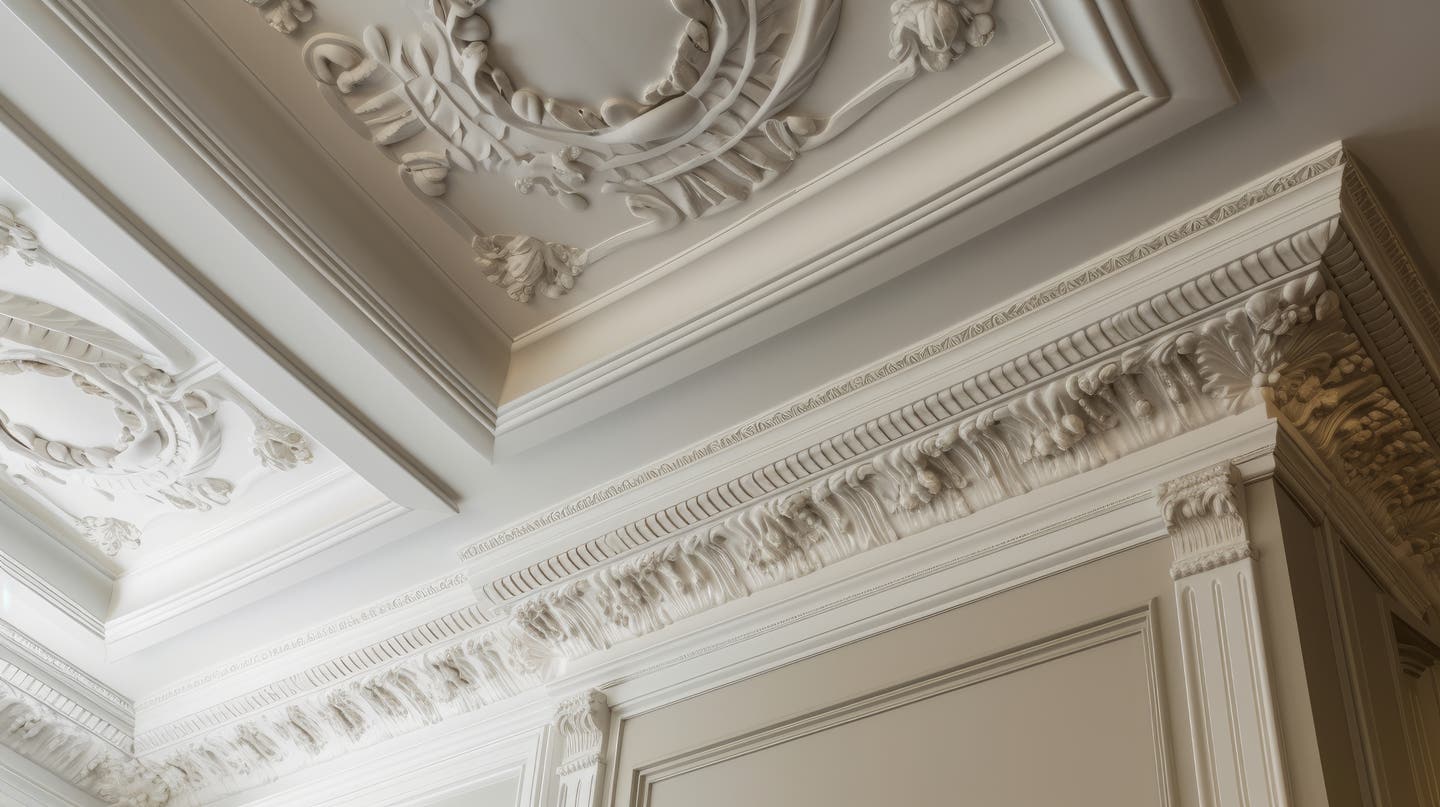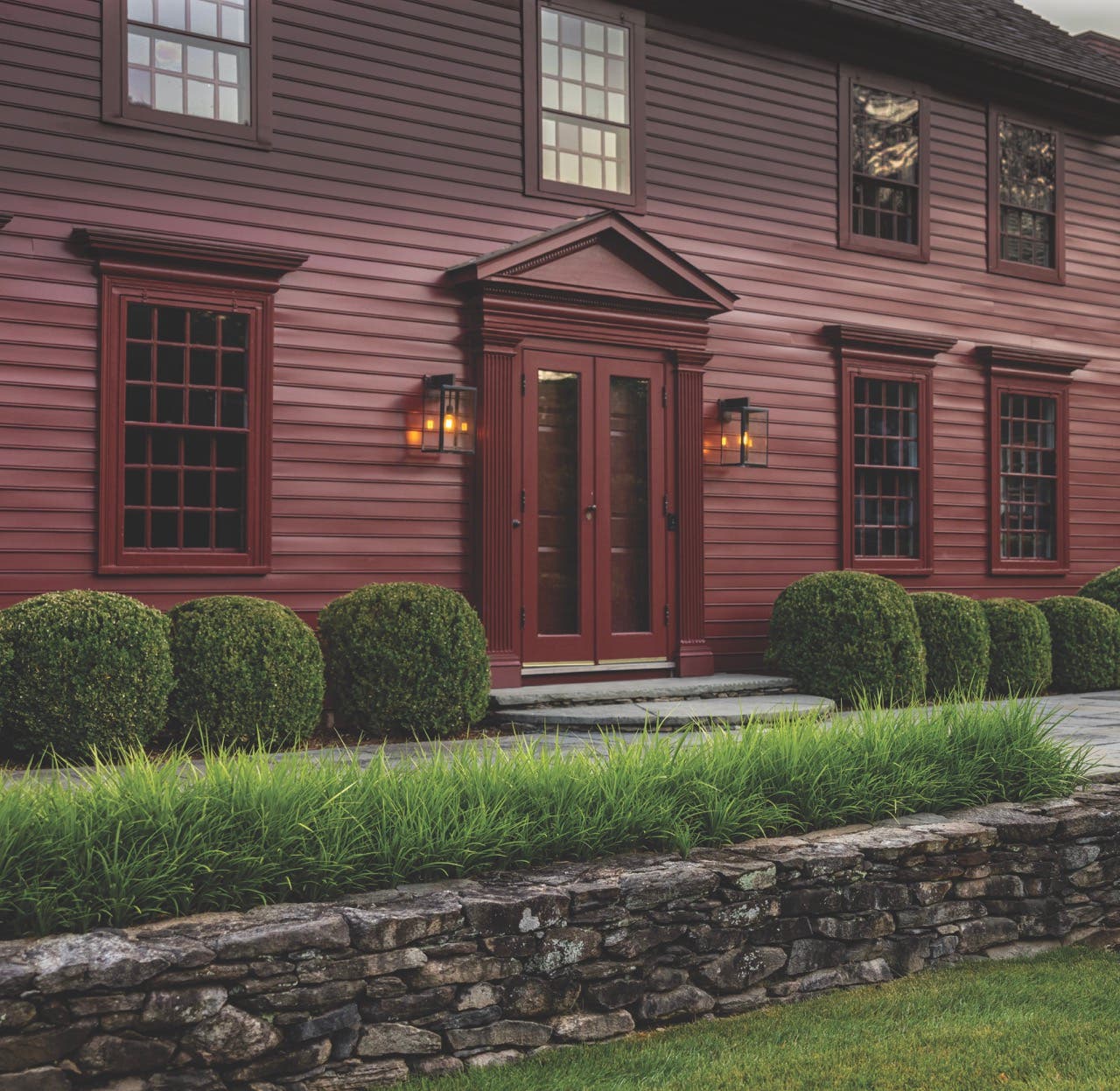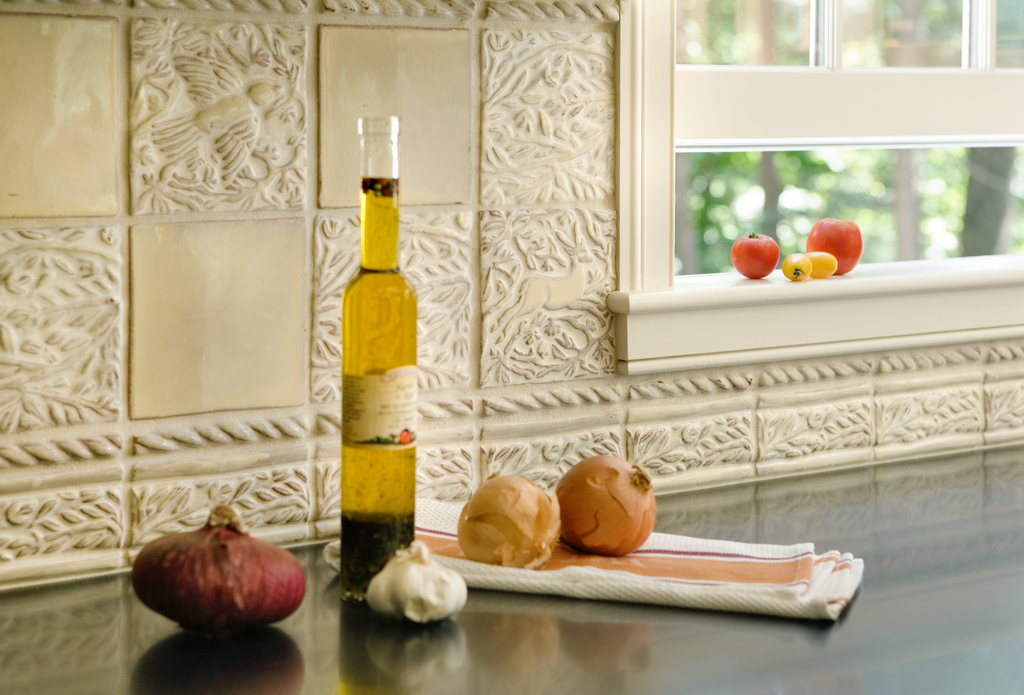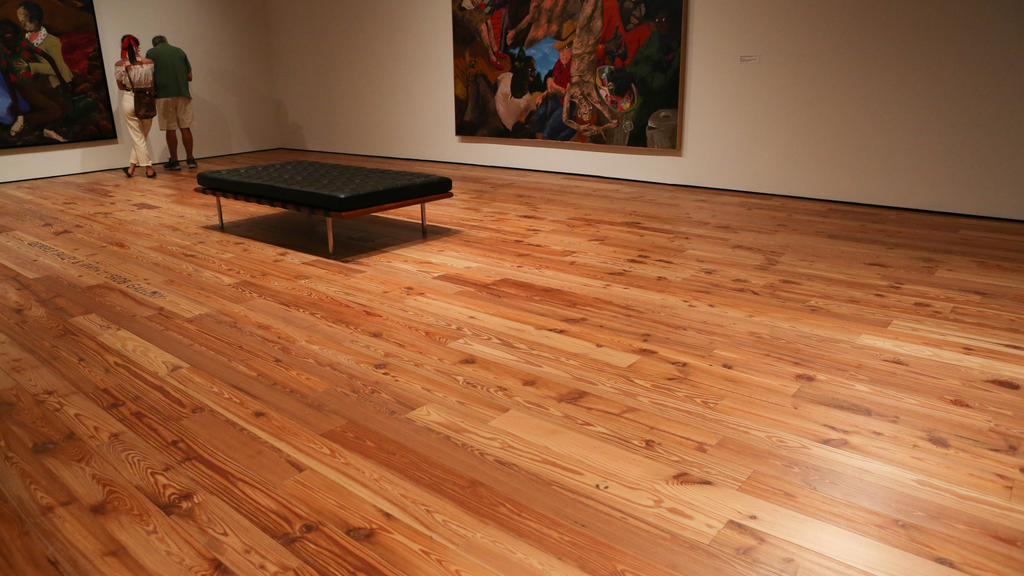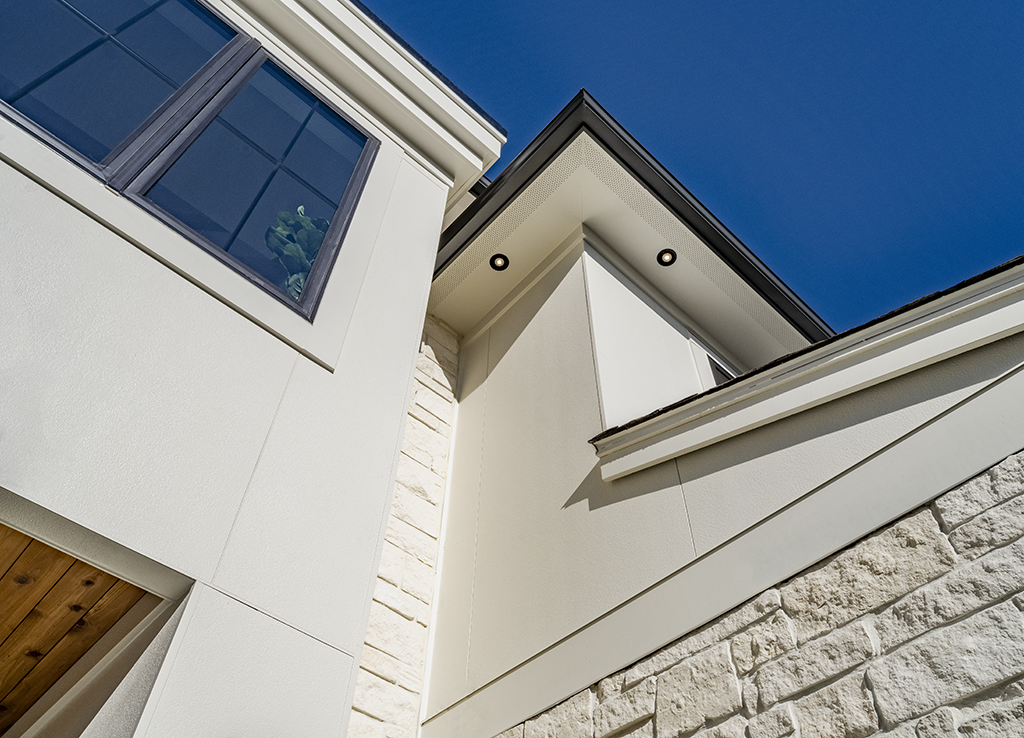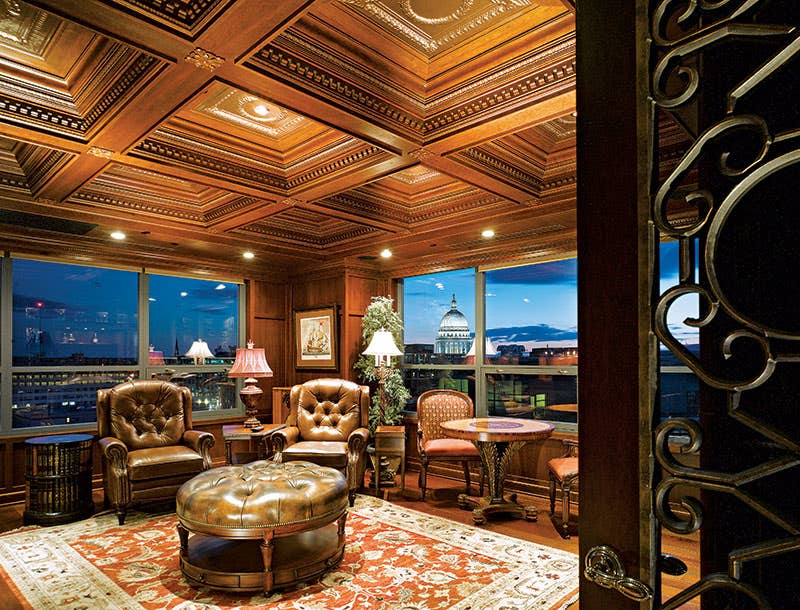
Woodwork & Reports
The Many Styles of Decorative Wood Mouldings
Decorative wood mouldings, and related carvings and embellished architectural products, may at first appear to be fixed to particular times or building idioms but, in reality, these time-honored finishes continue to be highly adaptable and appealing, especially amidst the shifting sands of taste and economics.
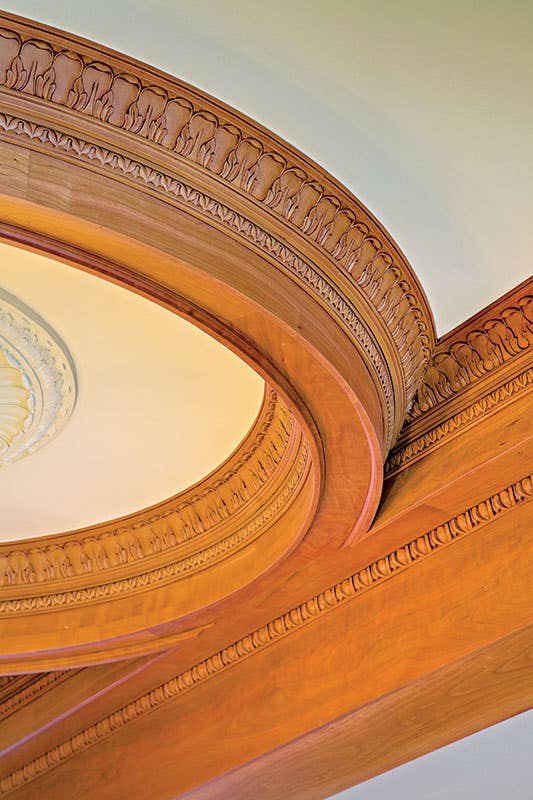

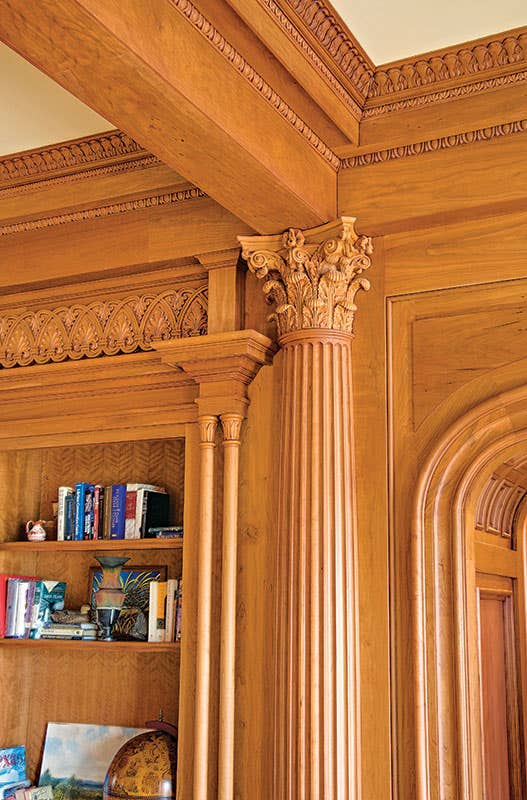
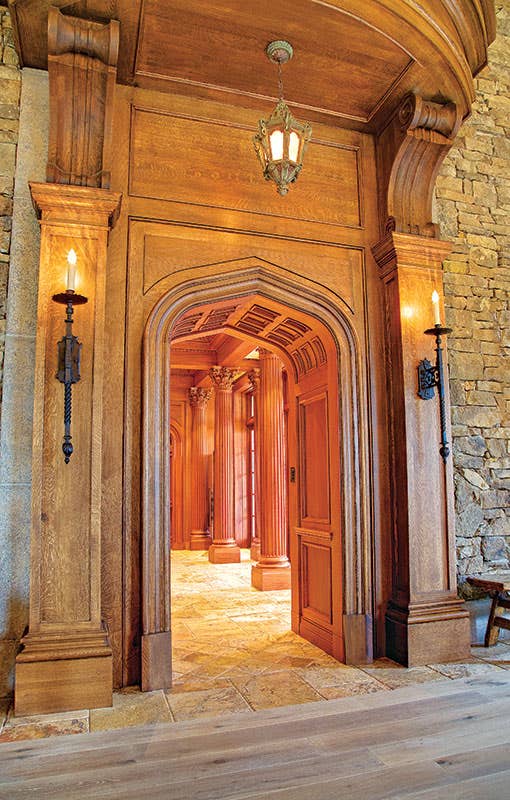
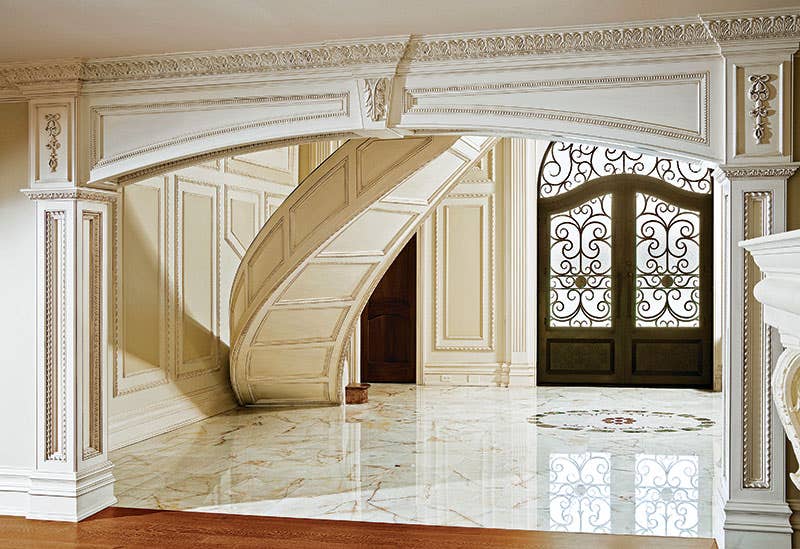
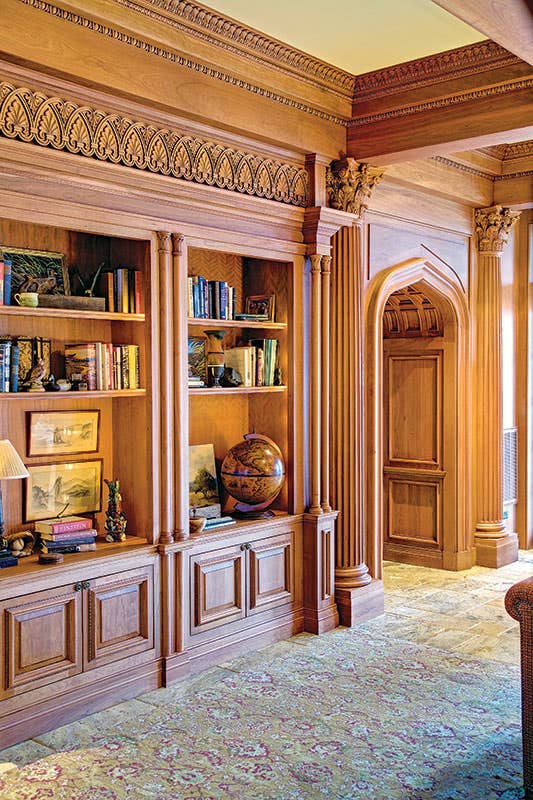
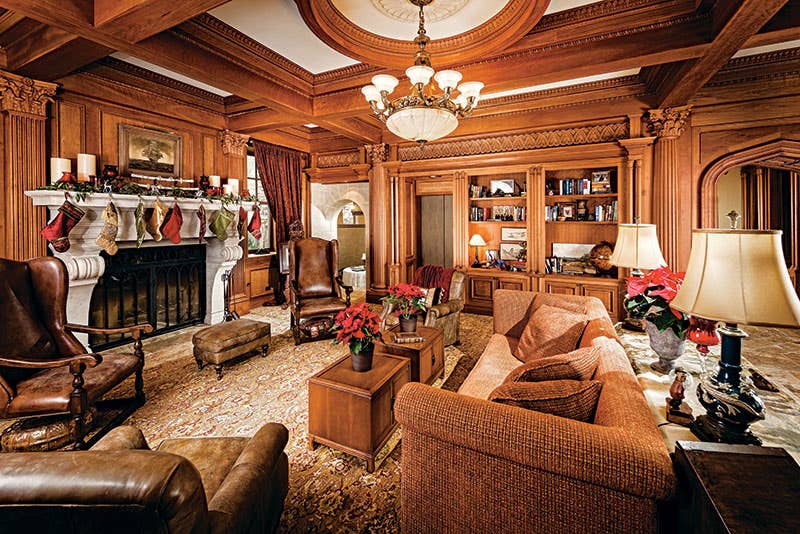
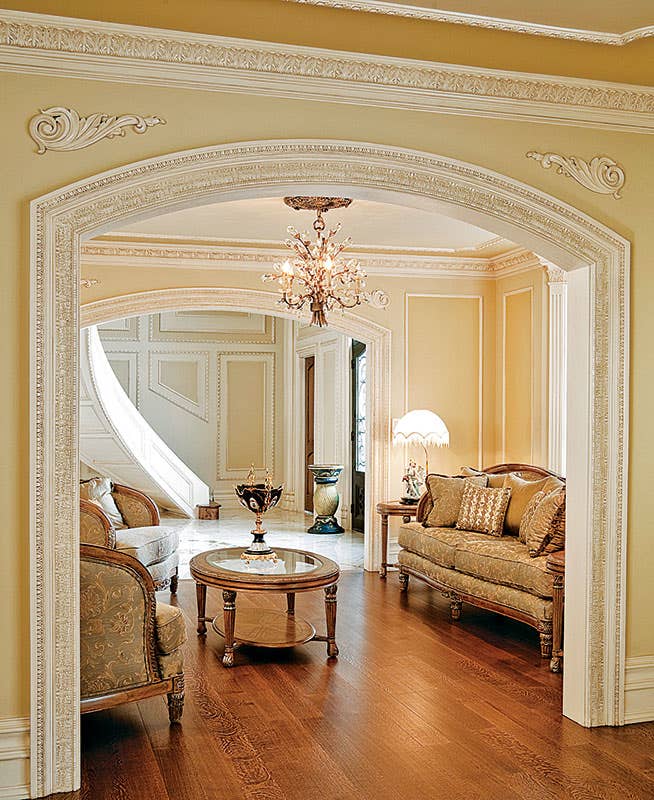

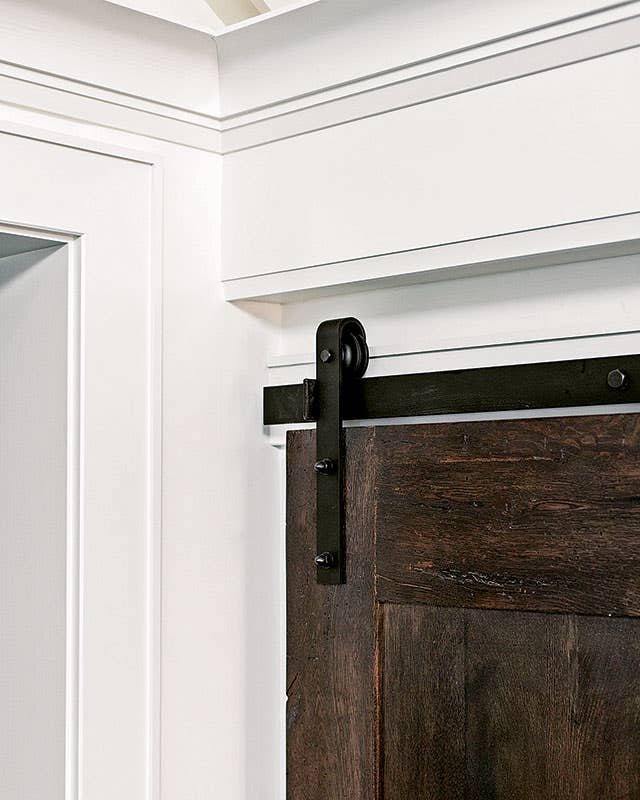
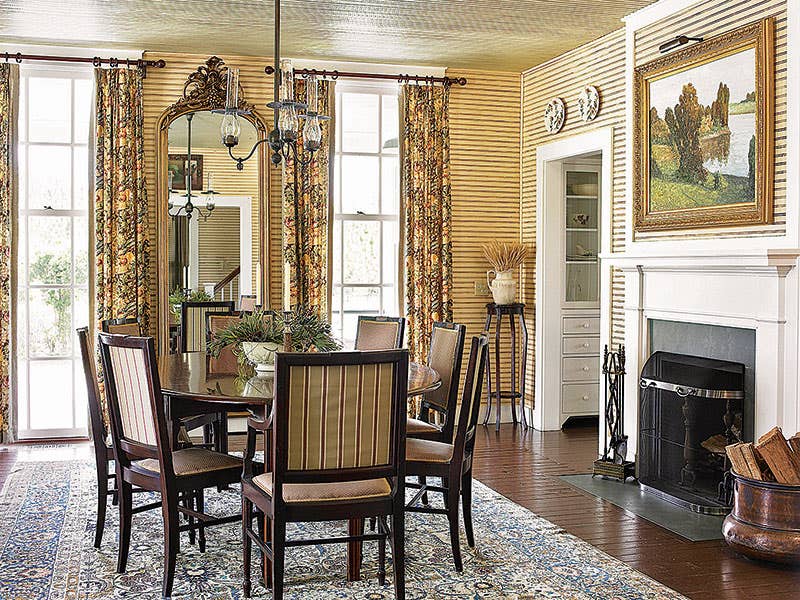
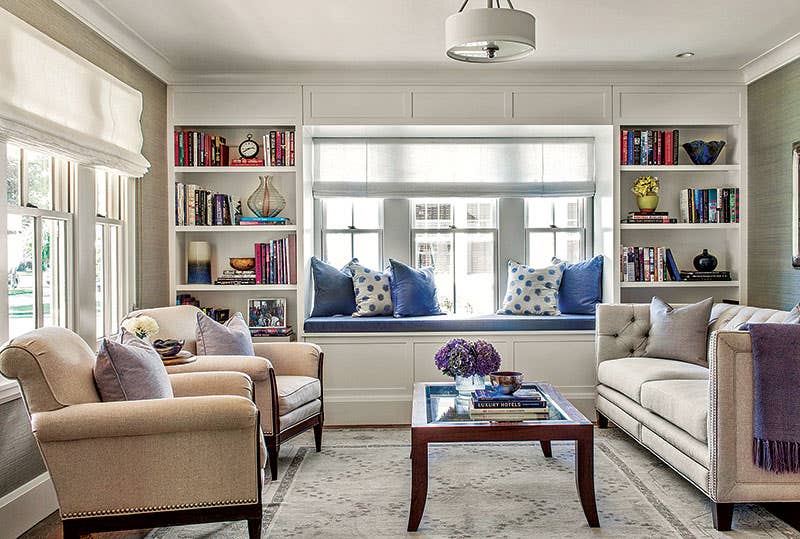
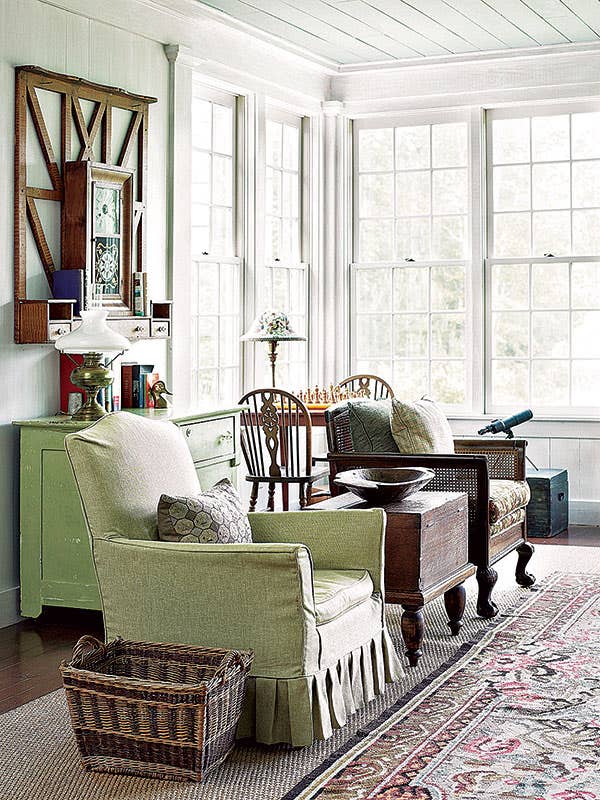
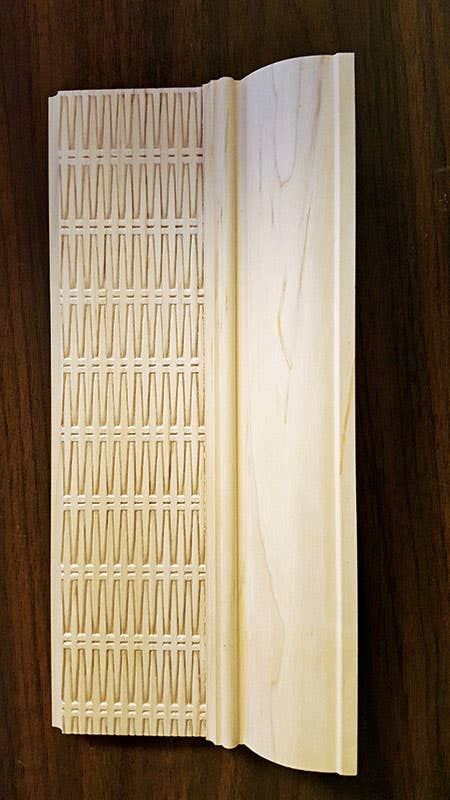
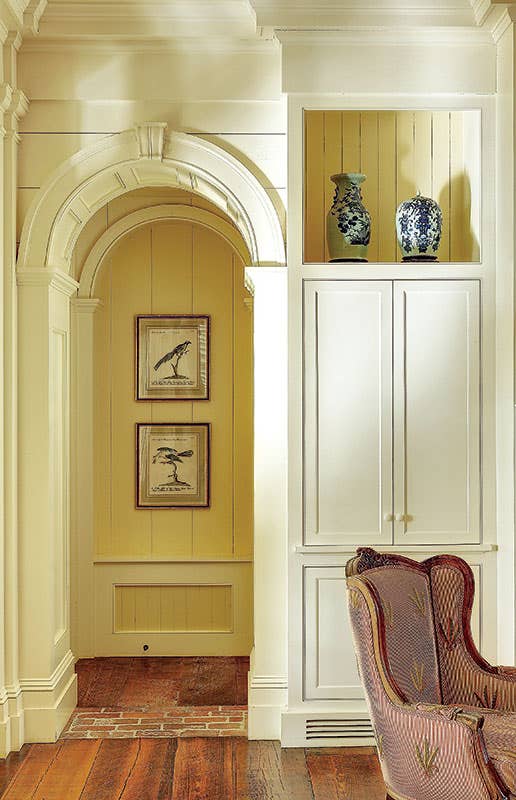
Few in the housing industry have benefitted from the great recession, and many moulding manufacturers report that the fall-off in house construction after 2008, as well as the drop in house sizes and budgets, reduced use of millwork for interiors in general. “But I would say since about 2012 and 2013, we’ve begun to see a trending back toward traditional interiors,” says Joan Johnson of White River Hardwoods in Fayetteville, Arkansas, “because America is a very traditional country.”
While it’s ever hard to read the tea leaves of decorative taste, a national business provides some useful snapshots. According to Rosanna Vaughn at Enkeboll Designs in Carson, California, “Along with the economy, we’ve seen the trends change a lot to simpler lines and contemporary design.” She says they used to sell not just more decorative mouldings, but also ornate onlays and panels. “Still, our most popular sellers are acanthus leaf, egg-and-dart, and grape designs, where we’ve taken some of the Greek and classic designs and made them our own.” Back East, Barbara Stiehl at Bendix Architectural Products in Passiac, New Jersey, has a similar view. “Basically, what we sell the most are the classic pieces—egg-and-dart, Greek key. We don’t sell as many dentil mouldings as we used to, and tastes are getting much simpler and modern with sleek designs, but there are still very traditional people out there.”
Indeed, there’s no ignoring the lingering influence of the 20th century’s 800-pound design gorilla: Modernism. The Modern ethos still rules, in Johnson’s view, because there’s so much money invested in it. “They’ve got manufacturing set up, they’ve got refrigerators, they’ve got stoves; they’re not going to turn off the tap and go back.” In fact, she was once advised, “Don’t design mouldings for Modern designers because part of Modern is to design without mouldings.’”
According to Philip Tomasello of Klise Manufacturing in Grand Rapids, Michigan, “We find that people in their 30s and 40s that have money are definitely looking at less ornamentation but more texture—in kitchen cabinetry for sure, but also for more whole-home ornamentation.” Instead of the decorative cabinets that were the hallmarks of upscale kitchens in the past, he now sees people opting for stripped-down, Shaker-style cabinets. “Yet the same people may want an accent trim piece in their crown moulding, or a real unique chair rail for their dining room.” This is where he finds ornamentation picking up, as accent statements in the whole home. “Chair railings, frieze mouldings, crown inserts— you name it, that’s really some of our best and biggest applications.”
Not surprisingly, he notes that ornamental mouldings remain strong in the historic renovation market, as well as with baby boomers who have the pocketbook and passion for period design. “They want what they want, and they’re going show the world the fruits of their success by making sure that every detail is the way it was on whatever architectural spin they’ve chosen.”
Even within these general trends, some regional preferences stand out. “Texas is a highly decorative market,” says Johnson, “and one of the biggest markets for everybody.” New York City is a very decorative market, she adds, and California is “decorative enough.” Las Vegas can be decorative, and Florida, which used to be decorative, is coming back. Areas that don’t show a strong penchant for being either decorative or classical, she theorizes, are where “all these genres come in—Shaker, Mission, and all that.”
Viewed from the left coast, Vaughn has similar comments. “California is still one of our top sales states, but as far as the overall home décor goes, here people tend towards less ornateness; there are simpler lines going on in California right now.” She concurs that in states like Texas and New Jersey, “you’re still getting homes with a lot of ornateness.”
Chagning tastes in Decorative Wood Mouldings
Whether it’s hemlines or tie widths, taste is a pendulum that swings back and forth between extremes, but if you’re a moulding maker, what do you do while the interest in ornament rebounds? Vaughn says her company has developed a line of what they call transitional designs that relate to the traditional moulding patterns the company is known for, but are more contemporary with simpler lines. “The base of the moulding is going to be a certain profile, such as a torus, and then you carve something on that shape. But in our more contemporary, transitional line, we’ve taken a bit of liberty by coming up our own designs, not basing them on any historical pattern per se.” It’s a tricky balancing act, to be simpler yet attractive and distinctive. “We don’t feel that we fit into what people call Modern because, to us, modern is very plain compared to what we do,” she says. “Also, we’re only going to simplify to a certain point because, obviously, we’re a carving company!”
At the same time, the company has branched out in a more ornate direction. “We partnered with Hearst Castle to do a line that is a play from all of Julia Morgan’s collection,” explains Vaughn, referring to the Ecole des Beaux Arts-trained architect. “It’s based on some of her original renderings done for Hearst properties, specifically the Castle, and it’s quite ornate and beautiful.” Recently, the company has begun offering some other items in poplar wood. “Since painted kitchen cabinets are so popular right now, as opposed to the staining, we thought we would help our customers out by selling them as paint-grade, and at a little bit lower cost.”
Says Tomasello, “What we’re seeing across the board in the design community is that interiors that were once very traditional—from five-star hotels to residences—are now looking for unique mouldings that are textural in nature.” While these may mirror textiles, boutique wallpaper, or have a cross-hatch pattern like a wicker weave, the watchword is non-cliché’d patterns.
“Everybody has seen rope moulding everywhere. Now we hear a lot of requests for chair rails or frieze mouldings that have a wicker feel to them; more crown inserts with a unique texture.” His company’s response has been to jump in with the thousands of embossed moulding options they offer. “We take our hardwoods and, with a combination of heat, pressure, and a custom embossing die, press and burnish the wood to create a relief,” he explains. “That’s been huge for us, a real growth area.” Embossed mouldings are also a standard a Stiehl’s company, along with gesso mouldings. “They’re a wood base on which we apply gesso, a mixture of clay and sawdust from the wood, so you can stain and paint it. From a cost perspective, they’re very reasonable.”
Adds Johnson, “There’s a whole body of people that want simplified mouldings for what you might call a traditional-light appearance for interiors, so we developed a line with a more contemporary look but still having classical weights and balances.” As she explains, “We think that any millwork that is sustaining, long-term, and holds up well in a project is going to have some basis of design around something classical—even if it’s simplified or just a part.”
Surprisingly, perhaps, what sometimes pulls the rug out from under the use of ornamental mouldings is the not the materials themselves, but the people left to work with them. Says Johnson, “We work a lot with architects and interior designers, and we work a lot with homeowners, but it’s always odd when you have a project on a really big home that lacks a design team.” She describes a tale, often told by architects, of clients who get so far with a house, and then think they can do the rest themselves. “The owners end up with a house that’s framed in and drywalled and suddenly they don’t have any idea what to do with their millwork.”
A similar scenario is where the design talent, due to pressure of projects or budgets, is not involved in the selection of mouldings or the installation. Explains Vaughn, “For instance, we’ve got mouldings that have a small pattern repeat of one or two inches, and then we’ve got mouldings that have a large, 24-inch repeat. So unless you’ve got a builder or a cabinet guy who’s proficient at doing that kind of work—say, who knows how to calculate what lengths are needed because he’ll lose 18 inches with each cut—he may choose a moulding that’s not as artistically beautiful just because it makes his life easier.”
Tommasello, whose company specializes in unique, custom-made mouldings, encounters another variation on the theme. “Where the disconnect often appears is with builders who are so commodity focused,” he says. For example, suppose the contractor assumes the mouldings are imported and wants to buy them off the shelf, or choose the cheapest possible wood. “Well, we don’t import product, we make it here,” he has to explain, “and if you want an inexpensive softwood, I can’t carve it or I’ll end up with toothpicks.”
Fortunately, there are ways to help bridge this design gap. One is the use of collections that manufacturers have put to together to do some of the homework on which piece goes with what. Another may be the supplier itself. “Clients come to us for products,” says Johnson, “but they also come to us for the way we can show how to put different build-ups in a room.” She says her company offers independent design services which, for a fee, will work all over the United States and internationally. “We can do most anything from a ceiling to a bookcase to an entire job.”
Plus, for those who feel a whole house of decorative mouldings is beyond the available talent, time, or budget, Johnson has some thoughtful advice. “Keep those things that set up the genre of a house, such as beautiful, one-piece mouldings that finish off a room, in only those three or four rooms that anchor a house when people come in.” The mouldings, she says, don’t have to be large-scale, but if you do have to cut back on the installation, do it in the back of the house. Finishes are what people notice, whether they realize it or not, and “Millwork and mouldings really give a lot of history to a house.”
Gordon Bock, co-author of The Vintage House (www.vintagehousebook.com), is an in-demand speaker for courses, seminars, and keynote addresses through www.gordonbock.com.




